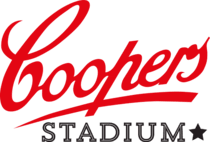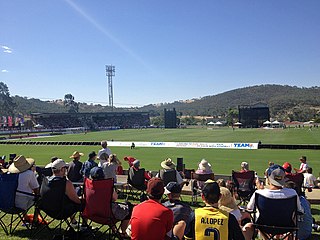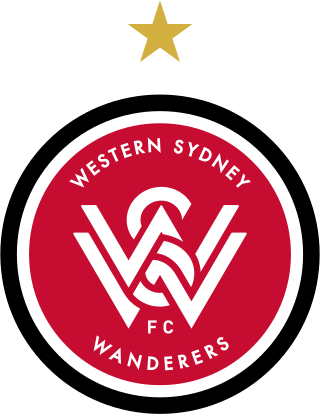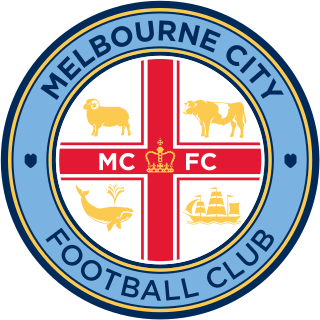
Stadium Australia is a multi-purpose stadium located in the Sydney Olympic Park suburb of Sydney, New South Wales, Australia. The stadium, which in Australia is sometimes referred to as Sydney Olympic Stadium, Homebush Stadium or simply the Olympic Stadium, was completed in March 1999 at a cost of A$690 million to host the 2000 Summer Olympics. The Stadium was leased by a private company, the Stadium Australia Group, until the Stadium was sold back to the NSW Government on 1 June 2016 after NSW Premier Michael Baird announced the Stadium was to be redeveloped as a world-class rectangular stadium. The Stadium is owned by Venues NSW on behalf of the NSW Government.

Canberra Stadium is a facility primarily used for rugby league and rugby union games, located adjacent to the Australian Institute of Sport in Canberra, the capital of Australia. It is the largest sports venue by capacity in Canberra.

The Sydney Football Stadium, commercially known as Allianz Stadium and previously Aussie Stadium, was a football stadium in the Moore Park suburb of Sydney, New South Wales, Australia. Built in 1988 next to the Sydney Cricket Ground, the stadium was Sydney's premier rectangular field venue for rugby league, rugby union and football.

Football Australia is the governing body of soccer, futsal, and beach soccer within Australia, headquartered in Sydney. Although the first governing body of the sport was founded in 1911, Football Australia in its current form was only established in 1961 as the Australian Soccer Federation. It was later reconstituted in 2003 as the Australian Soccer Association before adopting the name of Football Federation Australia in 2005. In contemporary identification, a corporate decision was undertaken to institute that name to deliver a "more united football" in a deliberation from the current CEO, James Johnson. The name was changed to Football Australia in December 2020.

Kardinia Park is a sporting and entertainment venue located within Kardinia Park, South Geelong, in the Australian state of Victoria. The stadium, which is owned and operated by the Kardinia Park Stadium Trust, is the home ground of AFL club Geelong Football Club. Kardinia Park can accommodate 40,000 spectators, making it the largest-capacity Australian stadium in a regional city.
A-League Men is the highest-level professional men's soccer league in Australia and New Zealand. At the top of the Australian league system, it is the country's premier men's competition for the sport. A-League Men was established in 2004 as the A-League by the Football Federation Australia (FFA) as a successor to the National Soccer League (NSL) and competition commenced in August 2005. The league is currently administered by the Australian Professional Leagues (APL), contested by twelve teams; eleven based in Australia and one based in New Zealand. The men's, women's and youth leagues have now been brought together under a unified A-Leagues banner.

Carrara Stadium is a stadium on the Gold Coast in Queensland, Australia, located in the suburb of Carrara.

North Sydney Oval is a multi-use sporting facility in North Sydney, New South Wales, Australia, owned and operated by North Sydney Council. First used as a cricket ground in 1867, it is also used for Australian rules football, rugby league, rugby union and soccer.

Football in Australia refers to numerous codes which each have major shares of the mainstream sports market, media, broadcasting, professional athletes, financial performance and grassroots participation: Australian rules football, rugby league, rugby union and soccer. There are four pre-eminent professional football competitions played in Australia: the Australian Football League, the National Rugby League, Super Rugby and the A-League (soccer). By most measures, including attendance, television audience and media presence across the most states, Australian football is the most popular nationally. However, in the states of New South Wales and Queensland, rugby football is overall the most watched and receives the most media coverage, especially the Rugby League State of Origin contested between the two states referred to as "Australian sport's greatest rivalry". In recent times, there has been an increase in popularity in Australian football and corresponding decrease in popularity of Rugby union in New South Wales and Queensland. Soccer, while extending its lead in participation rate, particularly in the large cities, and improving its performance at the FIFA World Cup and at the FIFA Women's World Cup, continues to attract the overall lowest attendance, as well as media and public interest, of the four codes.
The bidding process for the 2018 and 2022 FIFA World Cups was the process by which the Fédération Internationale de Football Association (FIFA) selected locations for the 2018 and 2022 FIFA World Cups. The process began officially in March 2009; eleven bids from thirteen countries were received, including one which was withdrawn and one that was rejected before FIFA's executive committee voted in November 2010. Two of the remaining nine bids applied only to the 2022 World Cup, while the rest were initially applications for both. Over the course of the bidding, all non-European bids for the 2018 event were withdrawn, resulting in the exclusion of all European bids from consideration for the 2022 edition. By the time of the decision, bids for the 2018 World Cup included England, Russia, a joint bid from Belgium and Netherlands, and a joint bid from Portugal and Spain. Bids for the 2022 World Cup came from Australia, Japan, Qatar, South Korea, and the United States. Indonesia's bid was disqualified due to lack of governmental support, and Mexico withdrew its bid for financial reasons.

Hindmarsh Stadium is a multi-purpose stadium in Hindmarsh, an inner western suburb of Adelaide, South Australia. It is the home of the Australian A-League team, Adelaide United.

Marrara Oval is a sports ground in Darwin, the capital of Australia's Northern Territory. The ground primarily hosts Australian rules football, cricket, and rugby league.

Lavington Sports Ground is a sports ground located in the suburb of Hamilton Valley near Lavington on the north-west fringe of the city of Albury, Australia. The oval is nestled in the side of a hill, with concrete terraces cut into the southern side of the oval below a grass embankment and the grandstand and changing rooms located on the north-west flank. The venue also incorporates a 4 table cricket wicket, a velodrome for track cycling and two netball courts. The Lavington Panthers Sports Club licensed club was formerly located next to the ground, across Hanna Street.

Benjamin Buckley is an Australian businessman, former Australian Rules Footballer and current chairman of the North Melbourne Football Club in the Australian Football League. He is the former chief executive officer of Football Federation Australia.

The Melbourne Rectangular Stadium, referred to as AAMI Park due to a sponsorship arrangement, is an outdoor sports stadium situated on the grounds of Edwin Flack Field within the Sports and Entertainment Precinct in the heart of the Melbourne central business district.

Rugby league football has been played and watched by people in the Australian state of Victoria since the early 20th century. While for most of its history there the game's popularity has been marginal due to the dominance of Australian rules football in Victoria, rugby league's popularity has rapidly increased in recent years in the state's capital of Melbourne, due mainly to the introduction of a professional Melbourne-based team in the national competition.
The Expansion of the A-League Men is the ongoing process of establishing new clubs in the A-League Men. The A-League Men was established to replace the NSL as the top soccer division in the Australian league system and is the only fully professional league in the country. It was founded in 2004 with eight teams commencing competition in 2005 and has since expanded into new markets across Australia and New Zealand. The league is currently contested by 12 teams, although a total of 15 have competed at some stage in its short history.

Joshua Brillante is an Australian professional footballer who plays as a defensive midfielder for A-League club Western Sydney Wanderers. Brillante holds dual citizenship due to his Italian heritage.

Western Sydney Wanderers Football Club is an Australian professional soccer club based in the Western Sydney region of Sydney, New South Wales. It competes in the country's premier competition, the A-League, under licence from the Australian Professional Leagues (APL). formerly under licence by the Football Federation Australia (FFA). The club had established itself as a major force in both Australia and Asia, having won one A-Leagues Premiership and an AFC Champions League title in its history.

Melbourne City Football Club is an Australian professional soccer club based in the south–eastern Melbourne suburb of Cranbourne East but playing matches in Melbourne CBD, that competes in A-League, the highest division of soccer in Australia, under licence from Australian Professional Leagues (APL).
































